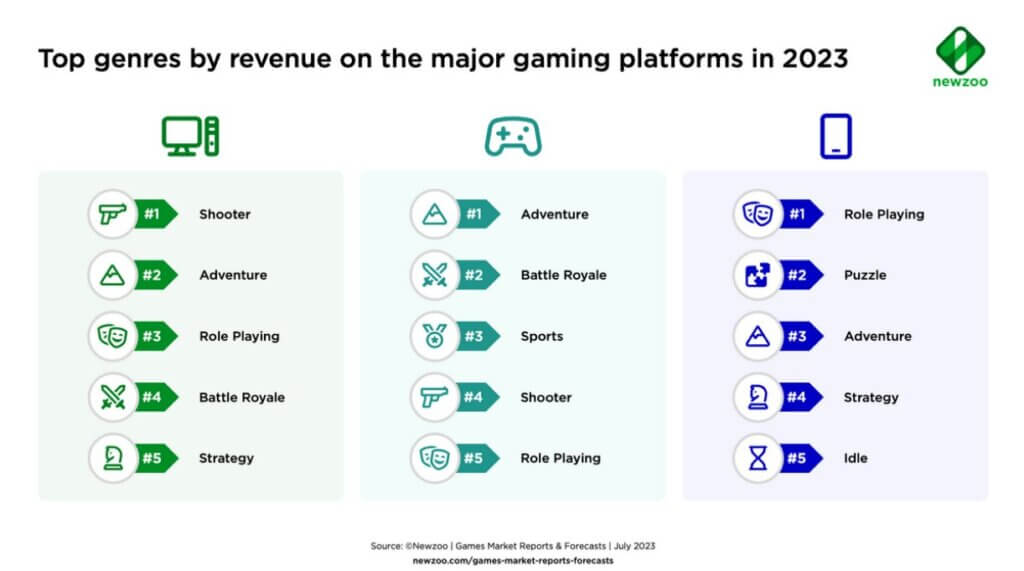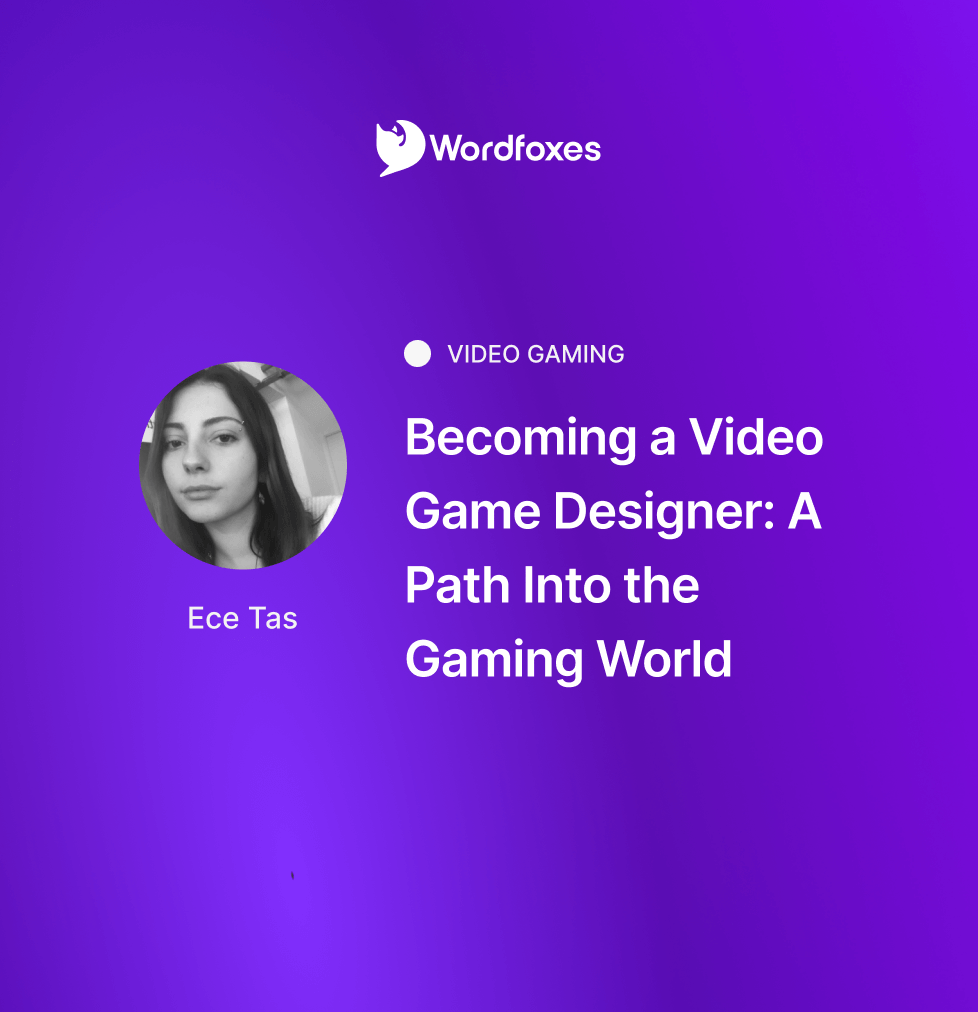If you came here to learn how to make video games, that means you are now a member of our independent (indie) developers community! We welcome you with open arms. Our community’s values are the greatest treasure we have in this industry. I will also provide links to many of the community’s great resources and learning materials.
Every artist and creator has their own creative process, so here’s mine: if you can, be prepared to never finish your creation. Be prepared to go forever in this joyful ride, and you will not wait for whatever metric of success, you will tread with growth. Someone who was apparently very wise once said: “only take another step if you know where to place your foot”. That person clearly never made any games. Games are an in-between endeavour. In-between the realms of possibilities, and choices.
Always grow, always be learning: all forms of art get better when we grow in it. Make the process fun for you. Or engage your players early if you want them to have fun with your game. And then, when you realize you’ve provided enough fun, finish your process. Knowing when to cut your game short is one of the most valuable skills for a creator.
If you follow this guide, perhaps you will grow faster than I did, and many others, learning from our processes. Our field of knowledge is ever expanding and improving, and that means we are specializing even more as we grow into subgenres, tags, genres, that best define our experiences as gamers.
In this article, I have prepared a mock-up with real-time examples to guide you through the setup for your video game, including the resources you would need, estimating the time it might take, budgeting, and many other useful tips. I would also suggest one framework for the whole process: Know your genre.
It’s important to know the genres that we, as developers and industry experts, have created. But more importantly, remember that these genres are meant to be consumed by the community, which interprets and redefines them through discussion and shared experiences and opinions. So always stick with the community.
The pipes are calling, Mario developer
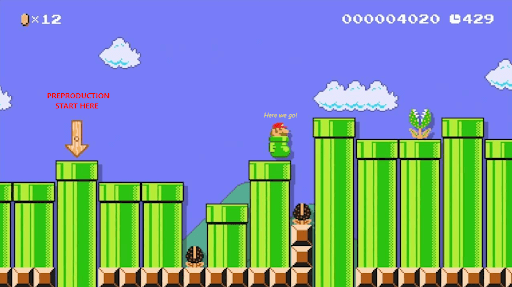
Let’s start by the basics. Do you know what genres, tags, and game types are? Merely (little piles of secrets, just kidding) attempts by the industry experts, developers and players to define what kind of experiences we may find in each particular game. Classification systems. For example, Steam has a search system for the most popular genres of games (first person shooter, action RPG, fighting, tower defense) but also includes tags as a possible search filter: nature (theme), steampunk (theme), rich narrative (subgenre), pandemic simulators (is it really necessary?), cats (adorable animals).
Now onto a quick disclaimer: games aren’t really defined by their genres or tags. These are obviously one of many possible descriptions you could attach to them. If you already have an idea for your game, knowing which genre it fits in may help you find starter kit materials, your niche. This guide will act like a jumpstart to prioritize your technical necessities and, hopefully, with getting to know your game’s community and target audience. Usually, the game development pipeline is subdivided into 5 stages for most games:
IDEATION -> PREPRODUCTION -> PRODUCTION -> LAUNCH -> LIVE OPS
I will, for this guide, suppose you already have an idea, and skip to the pre production & production stages.
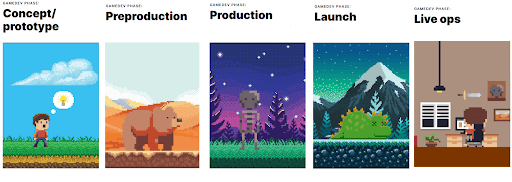
That doesn’t mean your time in ideation is not important. In fact, depending on your game, any of those steps could be the most important step (for example, mobile and software-as-a-service usually emphasize live ops). I also won’t comment on business and monetization models, in order to keep it strictly production-oriented. Maybe on another guide I can share references regarding the other phases of development. For now, let’s talk about how to design your game’s pre-production.
The design is your frame(work)
Many brilliant designers have made their own categorizations and frameworks for games. I’ll list some examples for those who are willing to dive deep into the wonderful waters of video game design. You can pick one, all of them, or none. If you want to keep it simple, pick the GDD or One-pager. I’ll try to keep a pragmatic approach to roadmap your development.
- Game Design Document (defining genre, high concept / elevator pitch, look and feel) , for example this template from the Indie Game Academy.
- One-page design document with milestones (template by game dev underground)
- Roger Caillous’ Man, Play and Games with the play forms of Illinx (vertigo), Mimicry (mimesis), Agôn (competition) and Alea (chance).
- The magic circle in Johan Huizinga’s Homo Ludens popularized by the works of Katie Salen and Eric Zimmerman.
- Break your game down into pillars of design, as in God of War (Combat, Father/Son, Exploration).
- Define game design as wearing different lenses for each case study, as taught by Jesse Schell’s Book of Lenses (try the web app for free if you’re interested)
- Use the MDA framework by Hunicke, Zubek and Leblanc to understand how the rules of the game (mechanics) offer interaction (dynamics) and reach the players’ emotions (aesthetics).
- Use UX techniques to define a player journey throughout your game
- Use Daniel Cook’s Skill Atoms to understand how players are driven to acquire and use skills
- Study consumer metrics and preferences to the minimum detail, such as the great Deconstructor of Fun blog/podcast, what types of User Acquisition & Retention methods are more efficient.
- Use metacompositional techniques from many other creative fields, such as contrast, counterpoint, story beats, etc.
As a technical designer, I’m interested in assessing the feasibility of ideas. I love great and complex ideas. But, when they are truly great and inspiring, I want to make them real. This guide suggests breaking games down into components, systems, assets and the technical skills you need to create them. It is focused on SCOPING and TIME BUDGETING for a specific game genre.
We are living in the easiest time to make games (due to user generated content, mods, multiple game engines), but making games is still one of the hardest and most time-consuming projects you could think of. Keep at it. Find your balance between idea, time and technique. And always remember the triforce of digital game development: art, design, and programming. Try to assess which are your strengths and weaknesses, so you can avoid losing time on workflows you’re not yet very familiar with.
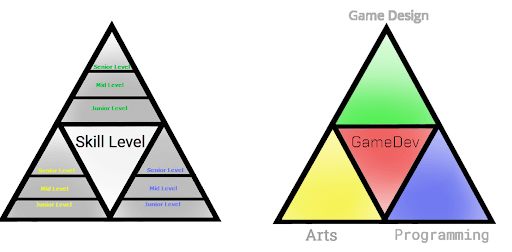
The genre is your canvas (or design space)
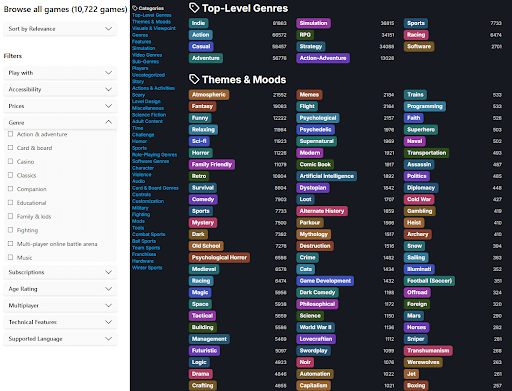
We are a very young industry yet, so we are still defining genres. Why are they important? Because they mostly define what type of experiences players will have in your game: “coop roguelike”, “extraction shooter”, “survival shooter” are good indicators and simplifications of gameplay.
I might even invent some genre names here or use recently-created ones, since my main goal is grouping player interests, not defining them. That’s because genres are almost useless after we know what really moves us in a game. Then, we don’t need the genre definition anymore, unless we want to describe it to a friend, or find similar titles.
Furthermore, we as players are becoming more demanding in those experiences, and game developers are specializing in these subgenres to build their niche communities, increase discoverability, interact with the community’s needs, etc. There are many good arguments being made and data that indicate that indie developers are specializing themselves, be it in the design, art style, theme, or systems.
If you like researching trends of play, here’s a list of useful data aggregators for the game industry: steamDB, steamSpy, newzoo, statista games industry, data.ai.
Genres also define technical feasibility, sometimes. Every game designer student has heard the adage “Don’t try to make GTA”: it took them years and thousands of the most talented developers with multiple career specializations: game designers, level designers, systems designers, combat designers, concept artists, art directors, animators, tech/lighting/UI artists, sound designers, gameplay programmers, backend programmers, netcode programmers, etc.
Typically, each genre has its own state-of-the-art in systems, game design experiences, art styles, and with each passing day, these are becoming more and more specific. This is why genres are a good framework to start off, especially if you are not yet trying to achieve innovation or genre mashup in games. Many indies are succeeding by advancing the state-of-the-art in their specific genre or niche. For this, I have prepared a know your genre questions you may find at the bottom of this article to help you define better your video game.
Time is money… but money is time
Scoping and time budgeting are powerful estimation tools that will make you healthier than eating broccoli (it’s a metaphor do not try this at home). But how much time does it take to make a video game, after all? There are some questions you could start answering to measure your game’s scope, even before you’ve defined the genre or the tools you are going to use. This engine-agnostic approach could save you time by planning a feature roadmap, but if you already have one, then you can skip right to the tools and ignore these questions.
Can you imagine the complete player journey and all possible elements?
Then try writing it down. If there is anything you’re not sure how to implement, add it to the unknown/research time slot (which is one of the most dangerous time slots as a developer without a large budget. Even top-tier studios close their R&D departments for lack of feasibility).
Can you describe your core loop?
Use the high concept idea to imagine the player’s journey in your game. You could start by defining some action verbs, such as “manage a city”, “build a home”, “fly an aircraft”, “fight a troll”, “shoot a bow”. But it may get more complex than that, for example, “empower the player with skills up to level 200, allowing them to customize their combat style and weapons.” Here are other popular core questions you may whant to think of:
- What are the possible player actions?
- Is there any level or skill progression?
- Does the player engage in combat in any form?
- Are levels replayable, or linear until the end of the game?
Also, it might be useful to check this definition of core by Brenda Romero.
Can you describe essential side features?
Basically, these are what makes your game feel fleshed out, polished, and not a prototype. For example: having a unique UI, special illumination, motion effects, particles appearing on the screen, character customization, level editors, side game modes, etc. Common side features questions might be:
- Does your game need Interface/UX motion graphics and animations?
- Is the sound design part of the core loop? If not, how many unique tracks and sound effects do you need for your game?
- Does your game need an attractive UI? If so, how many unique wireframes?
- Does your game need a tutorial? How much detail is going into the menu?
- Do I need video game localization for how many languages?
Can you describe the art assets, style, characters and environments needed?
- What is the desired art style? For example cartoon, realistic, stylized, blended, pixel, other? Is it 3D or 2D?
- How many unique characters are needed?
- How important is the scenario detail? How many unique scenarios?
- Who are the characters? How much detail do they need to achieve the game’s statement purpose, for example: unique dialogue lines, custom appearance, voiceover, unique animations.
Do you need important platform/backend?
- Is your game multiplayer? Local or online?
- For which platforms do you intend to launch?
- How robust is the save system in your game?
- Optimization questions, for example: what is the intended frame rate for your target platforms?
As you may have noticed, many of these questions are similar to the genre questions at the end of this article. That’s another one of the benefits of knowing your genre: that means you got closer to knowing your project scope. You may choose to take the short, middle or the long road, but knowing your strategy and choosing wisely how to spend your development time is is halfway there. You could and definitely should use these scoping techniques to analyze your own speed in each of the many development skills mentioned (systems/level design, art assets creation, systems programming, and others).
Let’s talk business: how much does it cost to make a video game?
Now put on your (power) suit and let’s talk business: how much does it cost to make a game, really? Well, most games are collaborative efforts. And now you have defined the scope necessities for your game. So you could estimate the salaries and working periods of the three most common indie studios subdivisions:
- Game systems programmer
- Game designer/producer
- Art director
Here’s a template by GameBizHandbook you can use to estimate monthly costs. It’s as simple as filling out the estimated salaries for each role in your creative process (you can use glassdoor to research the average salaries in some world locations). Then you’d have software costs and hardware/utility costs. While those certainly aren’t negligible, if you are making an indie game, they are probably going to be of an inferior order of magnitude.
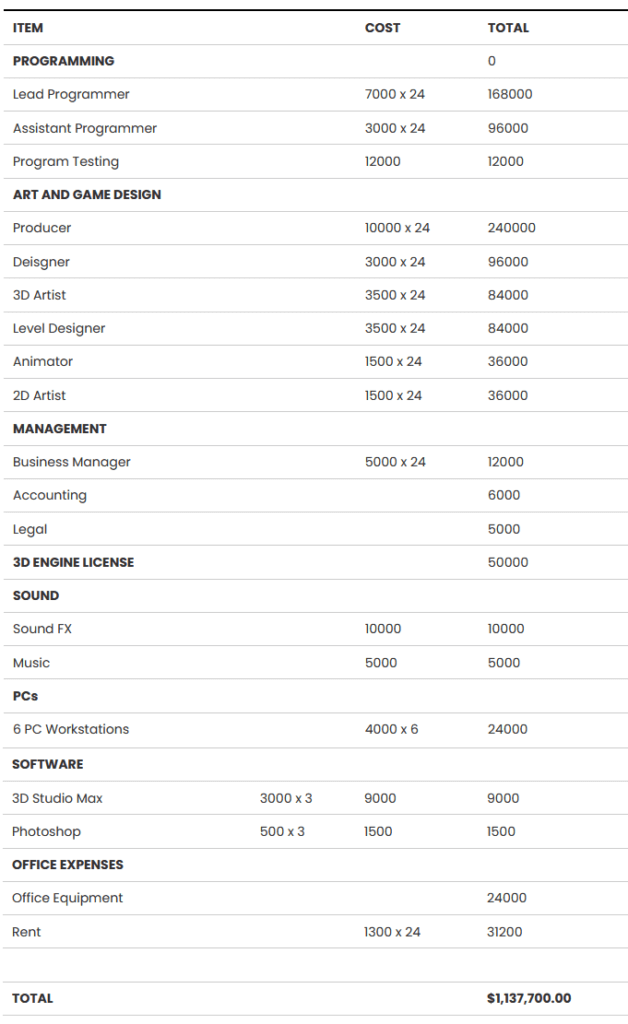
Make sure you are a responsible studio director/founder/solo developer. Estimating time is estimating livelihoods. There are plenty of inspiring founders in the indie games’ community. Try connecting with the folks at Indie Game Academy. Willem Delventhal recently posted a very useful flowchart that answers most founders’ questions when they started a studio.
Shoot(er) for the stars!
Let’s make a quick mockup for your first-person shooter game. As a matter of fact, nowadays those are usually called First Person Perspective games, since shooting may not be the core pillar of your design. For this case, let’s assume our idea is a first-person single-player game where the main character throws cards that have special effects on environments and against enemies.
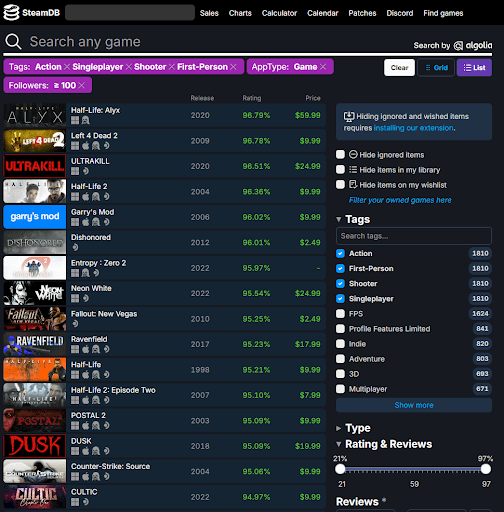
You may call this idea quite a gambit in the current industry. Let’s see why by analyzing the genre questions.
What are the most relevant development skills for this genre?
- Most first-person single players nowadays have main characters (sometimes even customizable) -> Character Art
- Multiple scenarios, possibly reusable -> Level Design & Environment Art
- Usually enemy characters, possibly reusable -> More Character Art, Animations, AI Programming
- Basic shooting & ballistics systems, game balance -> Programming & Combat Design
- Basic scenario assets, possibly some guns -> 3D/2D Asset Art
- Basic progression, some customization for skills/weapons -> Game Design
What are the Core Systems?
- Throwing the cards
- At least basic movement (idle, sprint, jump, dodge, crouch)
- Scenario Interactions (examples: card effects that open doors, explode areas, cause damage, other puzzle interactions to be defined by level design)
- Narrative design (even boomer shooters have basic narrative design)
- Health & Damage
- Basic Progression (skills or weapons or stat power-ups)
- At least a basic AI for the Enemies
- At least one boss per scenario
- Essential sound effects
- Essential animations
What are its Secondary Systems?
- Basic UI
- Some sort of map to help navigation
- Tutorial
What are the typical art styles that still engage the audience? (3d only, 2d only, multiple art styles?)
- 3D only (First-person)
- Possibilities: some hand-painted 3D assets, cartoon, realistic, or stylized
What are the genre’s most famous associated themes, fantasies, emotions?
- Loads of action & combat
- At least some moments of intense pacing
- Power & Progression
- Usually reflex-intensive
- Themes may vary, but usually involve overcoming challenges
What are the most successful / most played titles and why do players still enjoy them?
- Check SteamDB Chart and analyze them: RoboQuest, CULTIC, Neon White, Turbo Overkill
THE TOUGHEST QUESTION: What is the level of polishing expected by this game’s audience?
- Arguably mid-high. Even indie first-person games have a ton of polishing, animations, special effects, special sound effects, attractive art styles, some sort of way to hook players into buying (juicy gameplay, catchy animations, captivating characters, progression).
Feasible development course
Clearly, the expected value is already pretty high for this genre, with lots of features and scope. What could be a feasible development course, then? Let’s quickly analyze a minimum viable scope and answer the following questions.
Core loop questions:
What are the possible player actions?
- FPS basic movement, throwing cards, card skills.
Is there any level or skill progression?
- Yes, cards get stronger and unlock abilities.
Does the player engage in combat in any form?
- Yes, cards cause damage when thrown and enemies shoot weapons / melee engage.
Are levels replayable, or linear until the end of the game?
- This is a trick question. Roguelikes do not make replayability merely for the sake of simplification: they need lots of side systems such as multiple abilities, diverse sets of enemies and levels that justify different tactics from the players. They may repeat by the end of their loop, but it does not mean that the loop is faster than a linear game. Let’s go with a linear game here.
How many scenarios?
- For a linear game, let’s suppose 5 scenarios with an estimated time of completion of 1h each (that’s very low for First Person linear games, but you may verify that CULTIC has an estimated 5h time for main story completion at howlongtobeat.com)
Common side features questions:
Does your game need Interface/UX motion graphics and animations?
- Basic interface & UX. Enemy animations must have basic polishing, but could be simple.
- Basic menu and loading screens.
Is the sound design part of the core loop?
- Yes. Main character, enemies, cards thrown, scenarios, all of these assets must have sound.
Does your game need a tutorial?
- It is possible to make the First-Time-User-Experience (FTUE) in the first scenario of the game, therefore cutting the need for an isolated tutorial.
Do I need localization for how many languages?
- Minimum: Subtitles & Menu localization for all intended launch regions.
- Recommended: narration and character dubbing.
Important platform/backend questions
Is your game multiplayer?
- Single player.
For which platforms do you intend to launch?
- Launching for consoles would require a process called porting. Nowadays, porting single player shooters isn’t nearly as complicated as in the past, but it still consumes a lot of game developers’ time and resources. Let’s say PC only, for now.
How robust is the save system in your game?
- You can save at checkpoints. This is one of the easier forms of saving in most game engines.
Optimization questions, for example: what is the intended frame rate for your target platforms?
- First-person games require quite a lot of optimization since they should avoid motion sickness, maintain a steady framerate and allow responsive reflexes by the players.
There are many templates, processes and tutorials that could accelerate the development. Knowing when and how to use starter kits, templates or even fast prototyping skills is a highly effective way of cutting development time. And these days, there are many techniques available, such as kitbashing, procedural generation, UGC, modding, etc. For this particular mockup I would use the following settings:
- Game Engine: Unity
- 3D low poly characters: Blender
- Level design: ProBuilder (Unity free plugin)
- Sound Design: FMOD (free for indies with some rules)
- Narrative and dialogue: Yarn Spinner or Inkle
- Starter kit: Unity Learn 3D Game Kit (basic code for movement, animations). We can also use Mixamo and Kenney if things need to move extra quickly
- Visual coding tutorial for FPS: CodeMonkey
- Game character and monsters: Grant Abbit – Character / Monster
- Game audio workflow: Pro Sound Effects and Building Narrative Games with Yarn Spinner
Always lay your tools in an organized manner; some may call it “flat lay” or “knolling”. Even though you are working in a virtual environment, having your tools properly displayed and accessible can streamline and do wonders for your productivity.
Finally, we could estimate the time budget based on the expected quality and chosen tools & processes (according to our developer skill level).
Whenever you finish a project, credit all of the people whose work you used to build your foundations (even if they are free-use licenses). Every creation is an expression of our living references. Consider it a priority to evaluate your expected financial returns (if you do aim for professional development) versus the time budget and investment. As with all human activities, our wellbeing should come first.
Know-your-genre questions
Which are the most relevant development skills for my video game genre?
- Let’s take Vampire Survivors as an example: the 2022 indie hit required a lot of system design and programming, optimizing performance over visuals.
What are its typical Systems? Which are accessory/core systems?
- Horror games require a heavy dose of art: characters, environment, sound, narrative.
What are the typical art styles that still engage the audience? (3d only, 2d only, multiple art styles?) Can my game succeed with any art style? Or do players expect a certain art style? Would Red Dead Redemption 2 fans enjoy the same experience if it were a 2D top-down game?
- Most likely not, since single player linear AAA games rely heavily on top-tier art (but you could try, sometimes changing the art style can result in success if you keep other pillars of the design intact for the player). A recent successful example was Battlebit Remastered, which recreated many of the design pillars of Battlefield in 3D low-poly art.
What are the genre’s most famous associated themes, fantasies, emotions?
- Cozy games are a perfect example of a genre that is defined by its themes, fantasies and emotions. Players expect a cozy experience, and the other design pillars may shift around that core emotion (farming, diving, contemplating nature, house decoration)
What are the most successful / most played titles and why do players still enjoy them?
- This one could be simply a list you search on SteamDB, as we did with the mockup on this article, after defining your genre, or a deeper investigation of player profile. Recently, LEGO Fortnite proved that the survival sandbox/craft is still very much alive in players’ preferences.
What is the fastest game I can make using this style? The minimum viable product scope?
- Ok, so you know your genre is pretty time-consuming to develop, therefore, try to design the minimum viable game your players would enjoy without sacrificing core content (for example, don’t sacrifice replayability in a roguelike game genre, players expect lots of it)
What is the level of polishing expected by this game’s audience?
- This is the toughest question. Most games take more time to polish than they do to prototype or get to playable state. Some designers suggest allocating 50-70% of the entire development time for the polishing phase, after you’ve completed your game production, as mentioned here by Mike Bihell and in this full course from Unity. The good news is that polishing takes time, but isn’t exactly challenging, most tricks are pretty well-known: good sound cues, UI polishing, particles, etc.
The future (and all your base) are belong to us
Although we as developers may live turbulent times, hopefully we are entering a new and permanent era of indie studios. And you could be helping us grow as a community of developers and avid enjoyers of this exciting media. Defining games by genres and subgenres means that players are active participants in choosing their preferred experiences. This is a very interesting scenario for the industry.
Also, it means that innovation still has some design space to grow into subgenres, or even genre mashups. As Warren Spector said in his celebratory blogpost of 40 years as a legendary game designer: every passionate developer’s dream is to see new games rising to the heights of the great titles we always admired and loved in the past. And keep on rockin’ and racin’.
Caio Lianon chose the generalist way and learned to be an ardent defender of creativity in all its forms. Having worn proudly the myriad-of-hats as an indie developer, he now specializes in technical design. Also an accomplished localization specialist who worked on acclaimed indies and AAA games for nearly 10 years.
